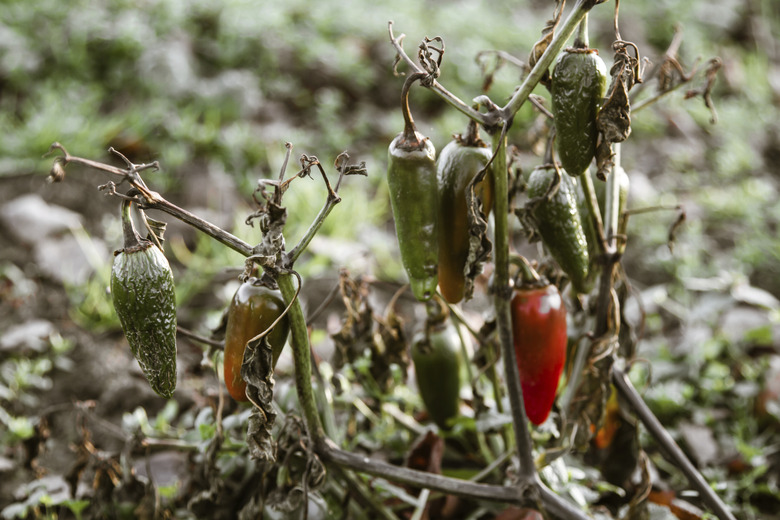The Definition Of Necrosis In Plants
What is necrosis in plants? Essentially, necrosis is the scientific term for the death of plant tissue. Necrosis usually occurs in a specific area, like leaves, roots or stems. Often associated with bacteria, viruses, fungi or parasitic insects, necrosis can also be caused by watering plants too much or too little, lack of nutrients or improper amounts of sunlight. Conditions leading to necrosis depend on the plant species, as tolerances to diseases and requirements for sunlight, water and nutrients vary widely across the plant kingdom.
Types of Necrosis
Types of Necrosis
Necrosis can eventually affect an entire plant, but it begins in a localized area. Resulting from the death of plant cells, necrosis usually turns the dying plant parts brown or black.
Often beginning at the tips of leaves, ends of roots or stems, necrosis spreads from those points if the cause of the tissue death is not addressed. Necrosis can also affect plant flowers and fruits, which may result in the complete loss of the crop if the issue is not solved.
Necrotic areas may look like round spots on leaves, brown edges or tips of leaves or roots or patches of dead tissue between leaf veins. The appearance of the necrosis can usually be traced back to a pathogen, disease or unfavorable condition in the environment.
Causes of Necrosis
Causes of Necrosis
Farmers and gardeners are like detectives, solving plant problems and mysteries by observing clues on and around the plant. When plant necrosis is observed in a field or garden, growers may discover helpful hints by taking time to notice what is going on around the necrotic plant.
Necrosis may affect a single plant in an entire row of the same species, or it could take down an entire planting. Plant diseases like blight travel through the wind and can be carried by water or unclean pieces of equipment, so if one tomato plant in a garden shows signs of this disease, it's likely others will become infected too.
The same is true for necrosis caused by insect pests like cucumber beetles – once they find one cucumber in a planting, they usually find all the other squash plants around too! Plant viruses like mosaics can lead to spotting and necrosis, and unfortunately these problems spread rapidly through plant families also.
Necrosis resulting from moisture issues or nutrient imbalances can be traced back to the soil the plant is growing in. It may be possible to feel that the soil is too wet or too dry by simply feeling the surface of the ground, but sometimes it's necessary to probe with a small trowel to assess the moisture below the surface.
If you suspect that nutrient imbalances are the cause of plant necrosis, a soil test is the only way to actually know – but sometimes simply giving the plant a dose of a balanced organic fertilizer will help it perk up if it is looking sickly.
Preventing Plant Necrosis
Preventing Plant Necrosis
Keeping plants healthy and adequately watered is the best way to prevent necrosis. Understanding the requirements of different plant species will help reduce preventable problems like overwatering or planting shade-loving perennials in too much sun.
A thriving plant is often able to fend off threats from insects, bacteria, viruses and fungi that can cause necrosis. Planting a wide variety of plants, rather than a monoculture of one kind, can keep losses to a minimum if one species succumbs to a disease or disorder.
Companion planting, like planting the "three sisters" – corn, beans and squash – together in one area, is one strategy for creating a biodiverse and symbiotic combination of species in a garden plot.
Cite This Article
MLA
Sloane, Christina. "The Definition Of Necrosis In Plants" sciencing.com, https://www.sciencing.com/the-definition-of-necrosis-in-plants-12003546/. 30 September 2021.
APA
Sloane, Christina. (2021, September 30). The Definition Of Necrosis In Plants. sciencing.com. Retrieved from https://www.sciencing.com/the-definition-of-necrosis-in-plants-12003546/
Chicago
Sloane, Christina. The Definition Of Necrosis In Plants last modified March 24, 2022. https://www.sciencing.com/the-definition-of-necrosis-in-plants-12003546/
